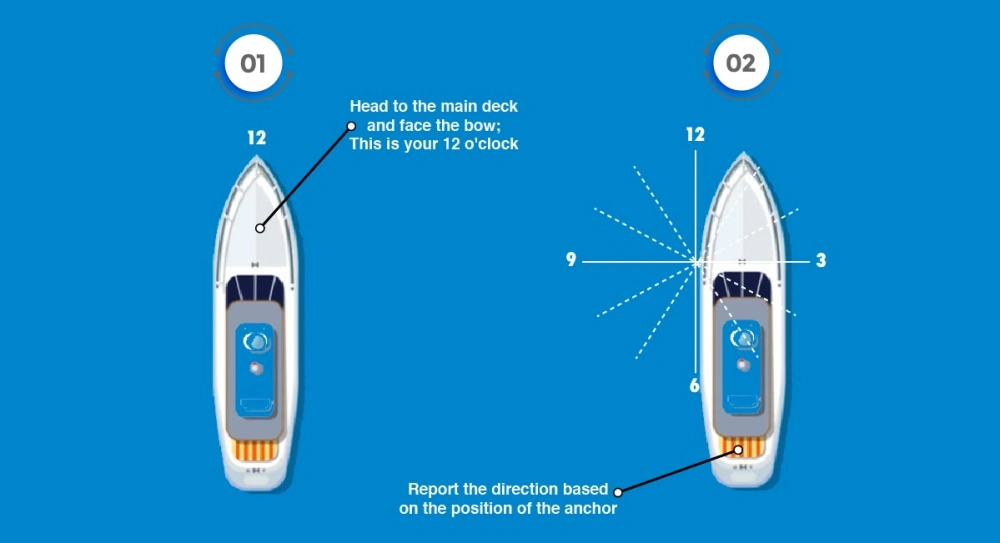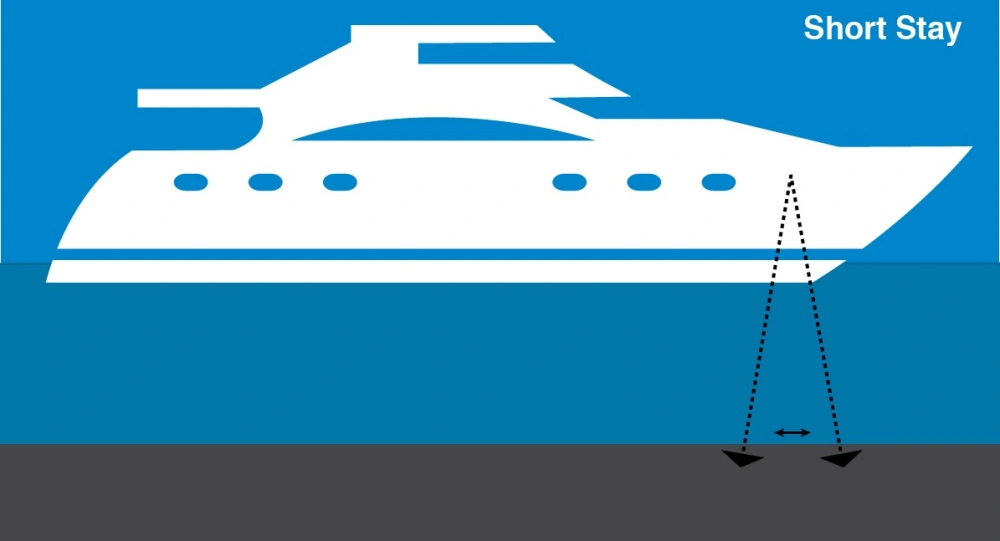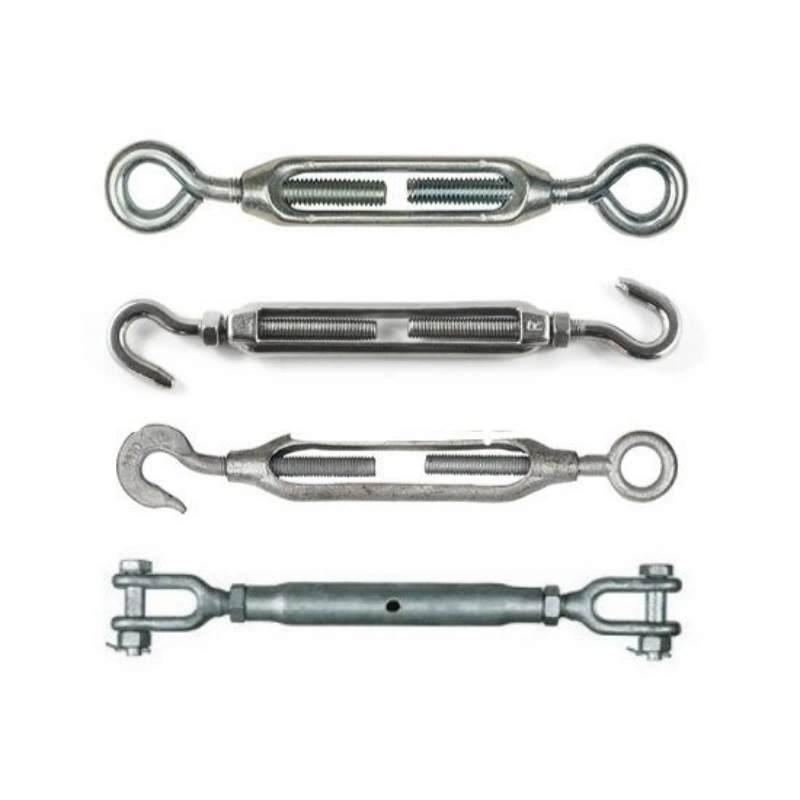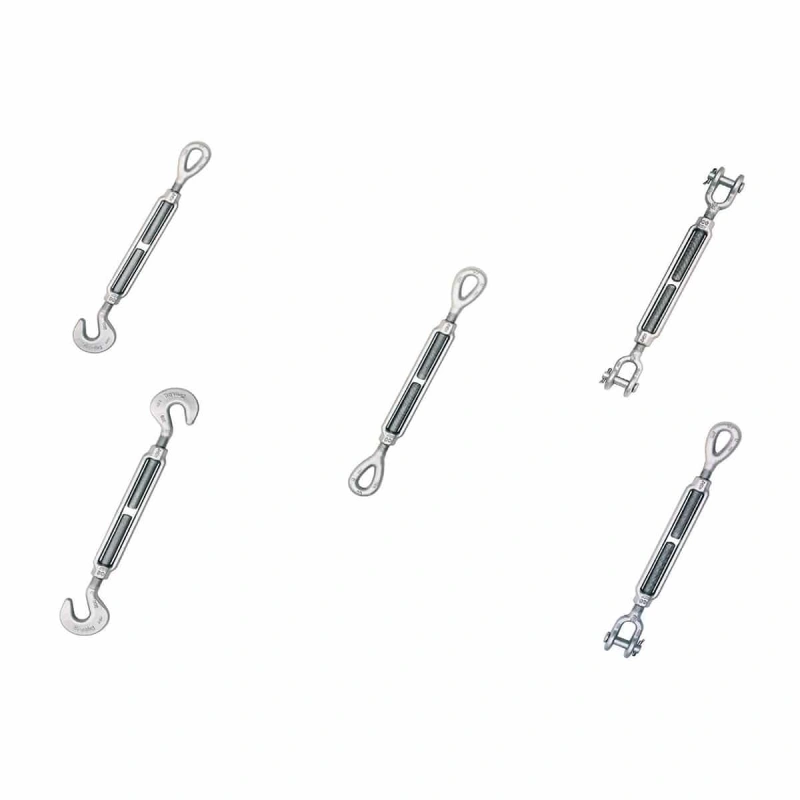When you want to know how to read anchor chain leading, start by observing the direction of the anchor chain using either the clock format or cardinal points. Next, assess the chain stay to determine if it is slack, short, medium, or long.
Always use standard reporting methods so your team and captain understand the anchor position. An accurate anchor chain keeps your vessel secure and supports safety during operations. You can trust Powerful Machinery anchor chains for reliable performance in tough marine conditions.
Key Takeaways
Observe the anchor chain direction using clock format or cardinal points to understand how the anchor is holding.
Regularly check the tension of the chain to assess if it is slack, short, medium, or long, which indicates the anchor’s holding power.
Communicate clearly about the anchor chain to ensure your team can respond quickly to any changes, enhancing overall safety.
Monitor environmental factors like weather and tides, as they can affect the anchor’s performance and risk dragging.
Use high-quality, certified anchor chains to improve safety and reliability during anchoring operations.
Importance of Reading Anchor Chain Leading
Why Accurate Reading Matters?
You need to understand the importance of reading the anchor chain leading before you can anchor your vessel safely. When you read the chain correctly, you help prevent dangerous situations. If you misread the direction or tension of the anchor chain, you risk anchor dragging.
This can cause your vessel to drift, which may lead to collisions or damage to your equipment. You can avoid these problems by staying alert and checking the chain regularly.
Anchor dragging can compromise your vessel’s position.
Drifting may result in collisions with other vessels or underwater hazards.
Equipment damage can occur if the vessel moves uncontrollably.
You should always monitor the anchor chain visually. If you notice the chain is not holding, you can pay out more chain or use the main engine to stabilize the vessel. These actions help you maintain control and keep your vessel secure.
The importance of reading the anchor chain lies in your ability to react quickly and prevent accidents.
Powerful Machinery designs anchor chains to meet the highest standards. You can rely on their products for consistent performance and durability in harsh marine environments.
Safety and Communication
You play a key role in vessel safety when you report anchor chain accurately. Industry standards require you to select the correct chain diameter and follow regulations for safe anchoring. The table below shows how different factors contribute to safety:
Factor | Description |
|---|---|
Anchor Chain Diameter | Choose the right diameter for your vessel and conditions. |
Compliance with Standards | Follow rules from IMO and classification societies. |
Operational Conditions | Match the chain to your anchorage environment. |
Professional Calculations | Use accurate calculations for chain selection. |
Clear communication about the anchor chain leading helps your team respond quickly to changes. You reduce confusion and improve safety for everyone on board.
Powerful Machinery supports your efforts by providing reliable anchor chains that meet strict industry standards. When you use high-quality chains, you increase the importance of reading the anchor chain leading and ensure your vessel stays secure.
How to Read Anchor Chain Leading?
Read Anchor Chain Leading Steps

You need to know how to read the anchor chain leading to keep your vessel secure and your crew informed. Follow these steps to assess the anchor chain and report its leading accurately:
Observe the Chain Direction
Stand at the bow and look at where the anchor chain leaves the vessel. Identify the direction using either the clock format or cardinal points. This first step helps you understand how the anchor is holding.Check the Chain Stay
Examine the tension in the chain. Decide if it is up and down, short stay, medium stay, or long stay. A tight chain may mean the anchor is under strain, while a slack chain could show less holding power.Assess the Surroundings
Look at water depth, bottom conditions, and nearby vessels. These factors affect how much chain you need to lay out and how the anchor will hold.Monitor Weather and Tides
Watch for changes in wind, waves, and tides. Adverse weather can pull the chain tight and risk dragging the anchor. In strong winds, the chain may lose its catenary curve, which absorbs shock. Without a proper snubber, the load transfers to the windlass and anchor, increasing the risk of failure.Use Reliable Equipment
Always inspect your anchor chain for wear or damage. Powerful Machinery anchor chains offer high strength and corrosion resistance, making them ideal for tough marine environments.
Tip:
Avoid common mistakes when you read anchor chain leading:
Failing to check water depth and bottom conditions
Using the wrong scope
Not laying out enough chain
Dropping the anchor too quickly
Not setting the anchor properly
Anchoring too close to other boats
Ignoring weather conditions
Not monitoring the anchor
Forgetting about tides and swell
Using damaged or worn gear
You can prevent most anchoring problems by following these steps and using certified anchor chains. Powerful Machinery chains help you maintain safety and reliability at sea.
Direction Methods: Clock and Cardinal Points
You have two main methods to report anchor chain leading: the clock format and cardinal points. Both methods help you communicate the anchor chain’s direction clearly.
Clock Format
Imagine the bow of your vessel at 12 o’clock. The stern is 6 o’clock. Report the direction where the chain leads using this clock face. For example, if the chain points off the starboard bow, you might say “anchor chain leading at 2 o’clock.”Cardinal Points
Use compass directions like North, East, South, and West. For example, “anchor chain leading North-East.” This method works well if your crew is familiar with navigation terms.
Best Practices for Reporting:
Start with Direction: Always report the direction first using either clock format or cardinal points.
Follow with Chain Stay: After stating the direction, provide information about whether it’s an up-and-down position or one of the three stays (short, medium, long).
Use Clear Language: Avoid jargon that may confuse those not familiar with anchoring terminology.
Be Consistent: Use consistent terminology across reports to avoid misunderstandings.
Visual Aids: If possible, use diagrams or physical markers on deck to help illustrate your report.
You should always use clear and consistent language when you read anchor chain leading. This practice helps your team respond quickly and reduces confusion.
Differences for Small Vessels and Large Ships
Small vessels often use lighter anchors and shorter chains. Large commercial ships require heavier anchors and longer chains for stability, especially in rough weather. For both, the standard practice is to deploy a chain that is 5-7 times the water depth.
For example, in 60 feet of water, you should use 300-420 feet of chain. This allows the vessel to swing freely and keeps the anchor secure.
Technological Advancements
Modern technology has improved how you read an anchor chain leading. The table below shows some advancements:
Advancement Type | Description |
|---|---|
Artificial Intelligence | Enables predictive maintenance and real-time monitoring of chain conditions to predict failures. |
Automated Inspection | Improves accuracy and efficiency, reducing human error in assessments. |
AI Algorithms | Analyzes operational data for optimizing chain design and material selection. |
You can rely on Powerful Machinery anchor chains, which meet the latest industry standards and support advanced monitoring systems. These chains help you maintain accurate anchor chain leading, even in challenging conditions.
Anchor Chain Stay and Position

Assessing Chain Stay
You need to understand the different types of anchor chains to ensure safe anchoring. The stay describes the angle and tension of the chain as it leads from your vessel to the water. Each type of stay gives you important information about how your anchor is holding.
Type of Stay | Description |
|---|---|
Up and Down | The chain is vertical, directly below the hawsepipe, showing the anchor is right under the bow. |
Short Stay | The chain is close to the ship’s side and leads down to the water almost vertically. |
Medium Stay | The chain forms an angle between vertical and horizontal, indicating moderate tension. |
Long Stay | The chain is taut and leads down to the water nearly horizontally, showing maximum tension. |
You should check the stay regularly. If you see a long stay, your anchor is under heavy load. A short stay means less tension, but you must still monitor for dragging. Up and down usually happen when you are about to weigh anchor.
Anchor Chain Position Reading
You can use visual assessment techniques to determine the tension and position of your anchor chain. These methods help you spot problems early and keep your vessel secure.
Watch the chain as you deploy or retrieve the anchor. A steady, smooth movement shows a proper setting.
Monitor your vessel’s position using fixed shore references or electronic systems with alarms.
Look for variations in chain tension. If the chain suddenly goes slack or tight, check for anchor dragging.
Notice any unusual effects, such as snatch loading or rapid slacking. These signs mean you should take corrective action.
A well-set anchor will show a steady chain with no sawing motion. If you see the vessel’s movement reduce as the chain takes load, your anchor is holding well.
Powerful Machinery anchor chains deliver high tensile strength and excellent corrosion resistance. Their chains meet strict standards for proof load, fatigue, and salt-spray resistance. You can rely on these chains to maintain proper stay and position, even in harsh marine environments.
Reporting Anchor Chain Leading
Standard Reporting Formats
You need to use clear and consistent formats when you report anchor chain leading. Start by stating the direction of the anchor chain using either the clock method or cardinal points.
For example, you might say, “Anchor chain leading at 3 o’clock, medium stay,” or “Anchor chain leading North-East, short stay.” This approach helps your crew understand the anchor’s position quickly.
Follow these steps for accurate reporting:
Observe the anchor chain as it leaves the vessel.
Identify the direction using the chosen method.
Assess the chain’s stay—up and down, short, medium, or long.
Report both directions and stay together.
Certified anchor chains play a key role in accurate reporting. When you use chains that meet international standards, you can trust the readings and ensure your reports reflect the true condition of your anchor system.
Powerful Machinery anchor chains meet strict requirements, supporting your efforts to maintain safety and reliability.
Evidence Description | Importance |
|---|---|
Compliance with international and local standards, such as the SOLAS Convention, is essential for shipowners and operators. | Ensures safety standards and avoids legal liabilities. |
The survey report includes a detailed description of the chain’s condition and recommendations. | Crucial for informed maintenance decisions. |
Regular inspections and maintenance prevent accidents and minimize damage. | Enhances safety and operational efficiency. |
Best Practices for Communication
You improve safety and efficiency when you follow the best practices for reporting anchor chain leading. Use simple language and avoid jargon. Make sure every crew member understands the reporting format and knows how to communicate changes in the anchor chain leading.
Every team member has a voice at Anchor. Regardless of title or tenure. When a laborer spots a potential issue, work stops. When an operator finds a better approach, we listen. This approach has prevented countless safety incidents, saved project time, and improved our methods across job sites.
Encourage open communication on your vessel. If someone notices a change in the anchor chain or leading, they should report it immediately. Regular training and clear procedures help everyone stay alert and respond quickly.
Always use certified anchor chains, like those from Powerful Machinery, to ensure your reports are accurate and your anchor system performs as expected.
By following these best practices for reporting anchor chain leading, you keep your vessel secure and your crew informed.
How Do I Know If My Anchor Is Holding?
Signs of Good Holding
You need to confirm that your anchor is holding before you can trust your vessel’s position. Start by asking yourself, How do I know if my anchor is holding? Use both visual and physical cues to check the anchor chain and leading. The table below summarizes the most reliable signs:
Cue Type | Description |
|---|---|
Visual Landmarks | Regularly check alignment with fixed landmarks to see if the boat is drifting. |
Rode Tension | A taut anchor rode indicates a secure hold, while slack may suggest dragging. |
Bearing Checks | Use a compass to take bearings of fixed points to detect changes in position. |
GPS Tracking | Set an anchor alarm on GPS to monitor movement outside a predefined area. |
You should also watch the anchor chain for steady tension. If the chain remains taut and the leading does not shift, your anchor is likely secure. Use GPS or a compass to track your position. If your vessel stays within a small swing circle, you can feel confident in your anchor’s holding power.
Tip: Always monitor the chain and leading during changes in wind or tide. Quick action prevents problems before they escalate.
What Should I Do If My Anchor Drags?
You may wonder, What should I do if my anchor drags? Immediate action keeps your vessel safe. Follow these steps if you suspect dragging:
Report the dragging anchor to the master right away.
Contact the engine room to prepare the main engine.
Advise the anchor party to ready the windlass for retrieval.
Ensure the bridge has a helmsman and a lookout on duty.
Inform nearby vessels and the harbor authority if needed.
You should also:
Monitor your ship’s position and the movement of nearby vessels.
Use radar and terrestrial objects to check for unexpected movement.
Observe the anchor chain for slacking or vibration.
Keep the anchor ready for immediate redeployment.
Powerful Machinery anchor chains provide the reliability you need in these situations. Their high-strength construction helps maintain secure leading and reduces the risk of dragging. When you use quality chains, you improve your chances of holding position, even in challenging conditions.
Conclusion
You can master anchor chain leading by following a few essential steps. First, check the chain and determine its direction using the clock format. Next, report this to the captain, then assess the stay and mention it in your report.
High-quality anchor chains maximize holding power, absorb shock, and offer long-term durability. When you select the right anchor chain for your vessel, you improve safety and anchoring effectiveness. Apply these methods and choose reliable equipment to keep your anchor secure in any marine environment.
FAQ
How often should I check my anchor status?
You should check your anchor status regularly, especially during changes in weather or tide. Frequent checks help you spot issues early and keep your vessel secure. Set a schedule and use alarms or visual checks to maintain safety.
What are the common mistakes when reading an anchor chain leading?
Many people overlook water depth, ignore chain tension, or use inconsistent reporting methods. Failing to monitor the weather or not using certified chains can also cause problems. Avoid these common mistakes when reading the anchor chain to ensure safe anchoring.
What are the best practices for reporting anchor chain leading?
Always use clear language and standard formats. Report both the direction and the chain stay. Train your crew to follow best practices for reporting anchor chain leading. Consistency and accuracy improve communication and safety on board.
Can I use any anchor chain for my vessel?
You should select an anchor chain that matches your vessel’s size and anchoring needs. Certified chains, like those from Powerful Machinery, provide the strength and durability required for marine environments.
How do I know if my anchor chain needs maintenance?
Inspect your anchor chain for signs of wear, corrosion, or deformation. Schedule regular maintenance and replace damaged links immediately. Reliable chains reduce the risk of failure and keep your vessel safe.


